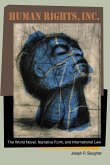What was the world like for people thousands of years ago? How can we know? Through fiction? This is a work of literary criticism, and more. It begins with a discussion of the problem of authenticity and then considers twelve pieces of fiction that depict human prehistory: H.G. Wells' The Island of Doctor Moreau, Pierre Boulle's The Planet of the Apes, Jules Verne's The Village in the Treetops, Edgar Rice Burroughs' The Land That Time Forgot, the struggle for legitimacy in Wells' "The Grisly Folk," the Tasmanian analogue in Lester Del Rey's "The Day Is Done," William Golding's The Inheritors, "the promise of humanity" in Arthur C. Clarke's 2001: A Space Odyssey, the theme of "a god among the heathen" in Wells' "The Lord of the Dynamos" and other works, Jean Auel's The Clan of the Cave Bear, J.H. Rosny-Aine's Quest for Fire, and Wells' The Time Machine: An Invention. A final chapter considers the paleoanthropologist as literary critic.
Hinweis: Dieser Artikel kann nur an eine deutsche Lieferadresse ausgeliefert werden.
Hinweis: Dieser Artikel kann nur an eine deutsche Lieferadresse ausgeliefert werden.









